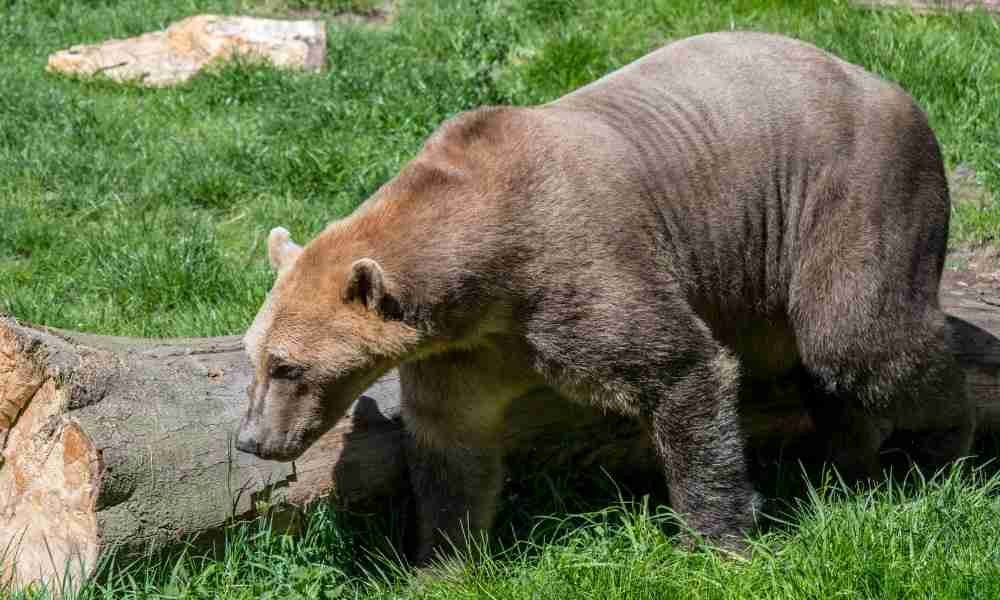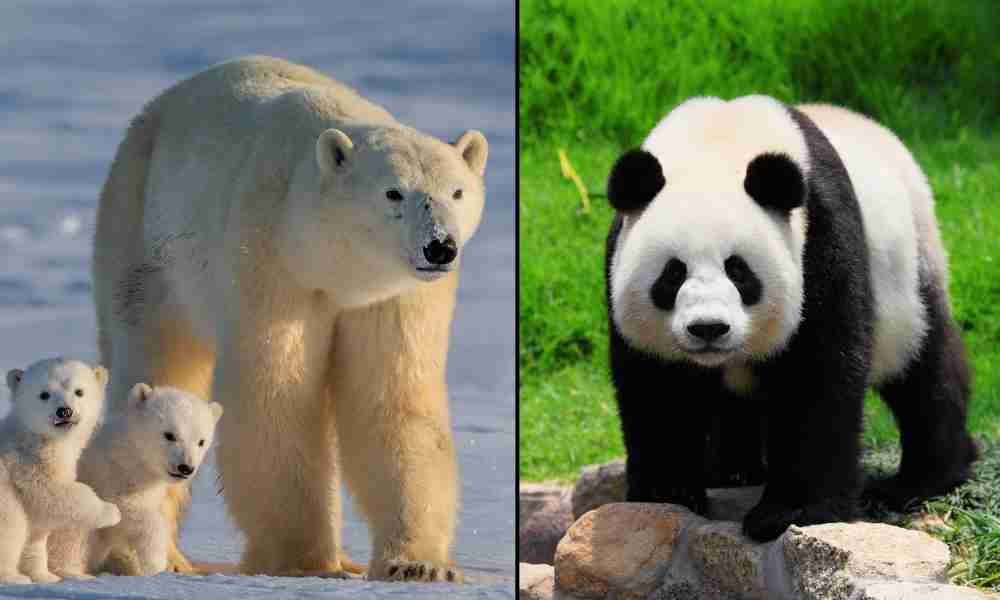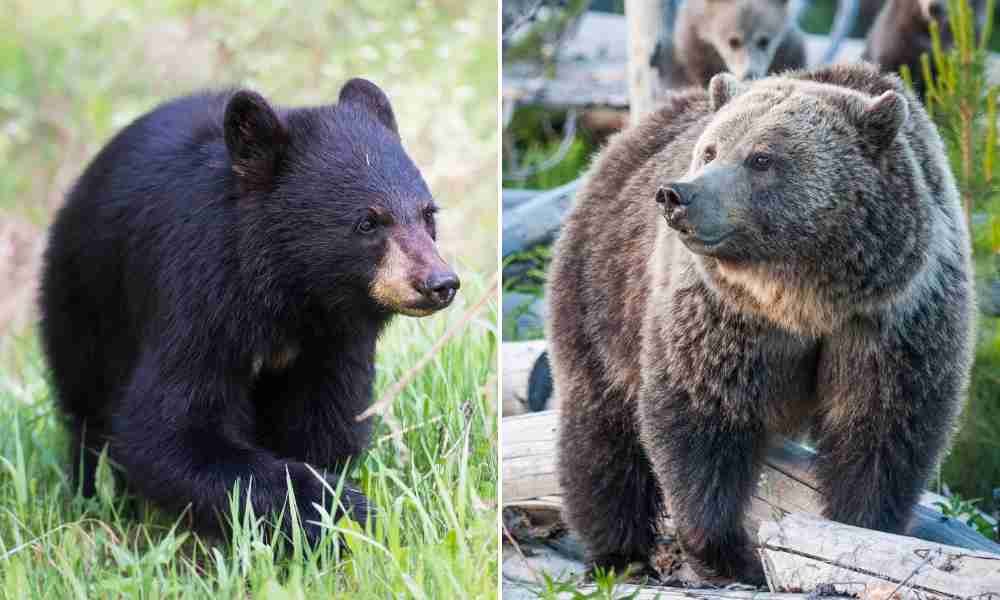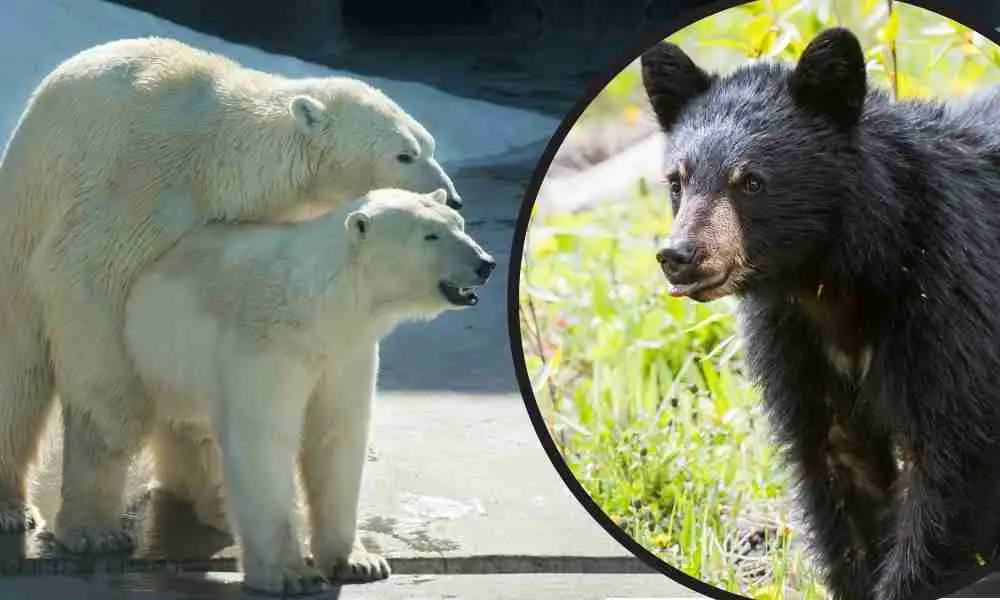Polar bears and black bears are completely different bear species. Since Polar and black bears belong to the bear family, you may be wondering if they can mate.
Here’s what I found out.
No – Polar bears and black bears cannot mate. They are two different species and are not genetically related to produce offspring.
Even if they were attracted to each other during the mating season, they wouldn’t be a good fit. This is due to their different numbers of chromosomes.
Polar bears have 74 chromosomes while black bears have only 68.
When two animals with different chromosome counts mate, the offspring cannot develop normally and are typically infertile.
That being said, there are more reasons why polar bears and black bears can’t mate. Continue reading below as we discuss this in detail.
Why Can’t Polar Bears and Black Bears Mate?
Polar bears and black bears may look similar, but they’re very different animals. Here are 5 reasons why they can’t mate:
They Live in Different Habitats
Polar bears and black bears are different bear species that survive in different habitats. Polar bears live in the Arctic, while black bears live in forests across North America.
This wide distance between their locations makes mating impossible. Sometimes in the wild, their habitat can overlap, but mating is still impossible because of other genetic and behavioral differences.
They Have Different Mating Seasons
Polar bears mate between March and June, but black bears mate between May and July. This means that their breeding time doesn’t line up for successful interbreeding.
Even if they were to mate in the same season, their offspring would not develop properly and would be infertile.
Their Mating Behaviors are Different
One of the things that makes it unlikely for polar bears and black bears to mate together is their different mating behaviors. The two animals have evolved to mate in different situations and different locations.
Polar bears are solitary, but black bears are more social. Male polar bears fight for their females for mating, while male black bears use mating calls and scents to attract females.
This difference results in disorder and confusion that makes mating impossible.
They Eat Different Foods
Polar bears are carnivorous and eat mainly seals. Black bears, on the other hand, are omnivores that eat plants, insects, and fish.
So their choice of food and nutritional needs are too different to raise offspring together.
They are Genetically Different
Polar bears and black bears share a common ancestor, but they separated over 4 million years ago. After such a long time apart, they’re now too genetically distinct to interbreed.
Take Note:
While polar bears and black bears may seem alike, the differences in their natural surroundings, biological clocks, and survival prove they cannot mate.
Their evolutionary paths split long ago, leading these bears to develop in very different ways.
Are There Polar Bear Hybrids?
Yes, there are polar bear hybrids, but they are rare to find. Although polar bears and black bears are two separate species, hybrids between them are possible.
The likelihood of polar bear hybridization may increase when the polar ice sheets melt. This can cause the habitats of the two bears involved to begin to meet each other.
Some scientists think polar bear hybrids could help the species adapt to climate change by introducing genetic diversity. However, others argue that hybridization threatens the polar bear’s genetic integrity and conservation.
There are a few cases of polar bear hybrids that have been recorded in the past:

In 2006, a polar bear hybrid nicknamed “Pizzly Bear” was shot by a hunter in the Northwest Territories of Canada. Genetic testing confirmed it was a hybrid, with a polar bear mother and grizzly bear father.
In addition, In 2010, a second-generation polar bear hybrid was discovered. His mother was a polar bear-grizzly hybrid, and his father was a pure polar bear.
While hybrids can happen naturally where the bears’ habitats overlap, most reported hybrids have been in captivity.
As polar bears face increasing threats to their survival, the debate around hybridization keeps increasing. Additionally, the impact of this hybridization on polar bear conservation efforts is likely to continue.
Are There Black Bear Hybrids?
Yes, there are black bear hybrids but they are rare. While they are extremely uncommon, they’ve been documented in the wild.
In Minnesota, a study of black bears found that 5% showed signs of past hybridization with polar bears. The polar bear DNA was traced back to a single female polar bear that mated with male black bears.
And this happened several generations ago. Her offspring then continued to mate with black bears, passing on traces of polar bear DNA.
Can Polar Bears Mate With Brown Bears?
Yes, polar bear and brown bear cross-breeding is possible but very rare. This is possible because they’re closely related and share a common ancestor.
Their mating seasons are not the same. What’s more, they live in different geographical regions and ecological niches.
However, climate changes can reduce sea ice and bring the two species into more frequent contact. At this point, polar-brown bear hybridization can take place.
Some zoos and wildlife sanctuaries have also experimented with polar-brown bear mating in captivity. Interestingly, a few cubs have been recorded.
This demonstrates that interbreeding is biologically possible, even in unlikely natural conditions.
Can Polar Bears and Pandas Mate?

No, polar bears and pandas cannot mate. Although they are both bears, they are not closely related enough to mate and produce offspring.
Polar bears are marine animals and live in the Arctic while pandas are terrestrial mammals native to central China. Not just geographic locations, but also differences in habitat, diet, and physical characteristics separate these two.
Due to these significant differences, polar bears and pandas cannot interbreed and have fertile offspring. Also, their mating behaviors, reproductive system, and number of chromosomes do not match.
Can Black Bears Mate With Grizzly Bears?

Yes, black bear and grizzly bear interbreeding is possible but very rare. Grizzly bears kill and eat black bears in the wild.
Still, these two bears can interbreed in captivity to produce offspring. Research shows that in 1859, at the London Zoological Gardens, a black bear and a European grizzly bear were successfully inbred.
And this crossing produced three cubs. However, they were very small and not mature enough to be studied when they were born.
Even though black bear and grizzly bear mating cannot occur in natural conditions, the records above prove its possibility in captivity.
Take Note:
While interbreeding between bear species is biologically possible, most hybrids do not survive long due to differences in habitat, behavior, and breeding seasons.
The rare hybrids that are documented provide valuable insights into bear evolution, migration, and adaptation. Though uncommon, these hybrid bears are proof of how nature finds a way to endure and thrive.
Conclusion
In conclusion, polar bears and black bears cannot mate. They are very different animals with distinct characteristics, habitats, diets, and genetics.
Nevertheless, polar bears can mate with brown bears and form hybrids with them. But they cannot mate with giant pandas due to their overall reproductive incompatibility.
Black bears, on the other hand, can mate with grizzlies in rare cases. But they equally cannot breed with pandas.
From this article, anyone can doubt pandas are bears since they can’t even breed with any bear species. So why are they considered bears in the first place?
Find out in our article “Are Giant Pandas Considered Bears?” And you can check our full article that explains the interbreeding of different bear species in detail.
Sources:

